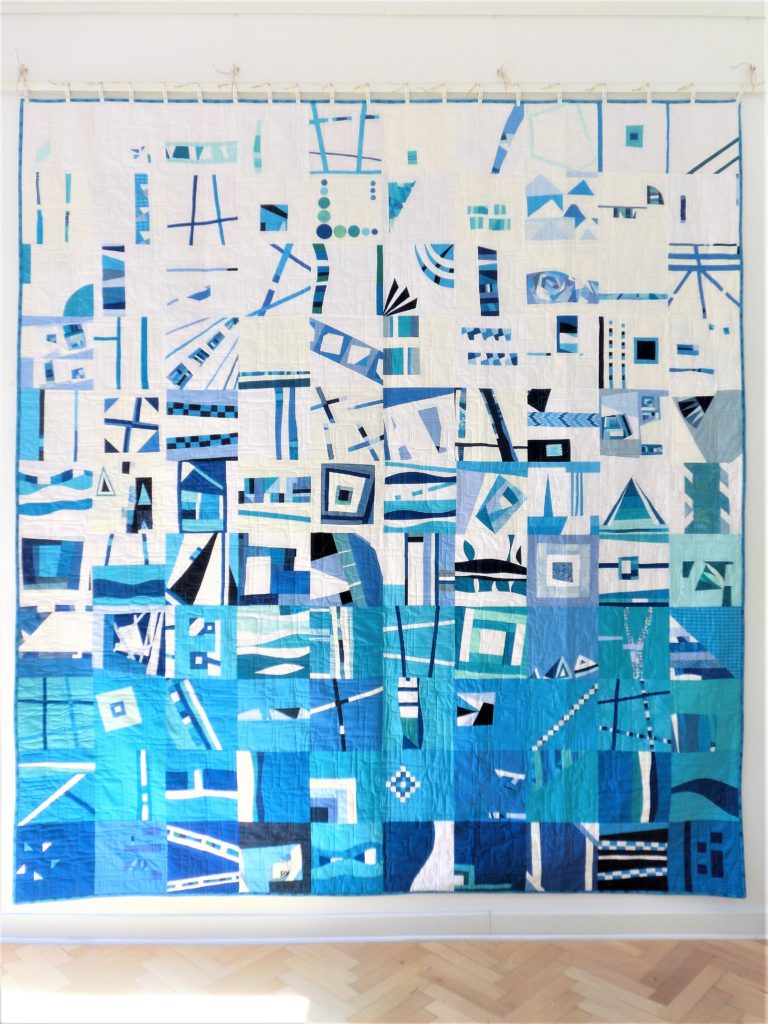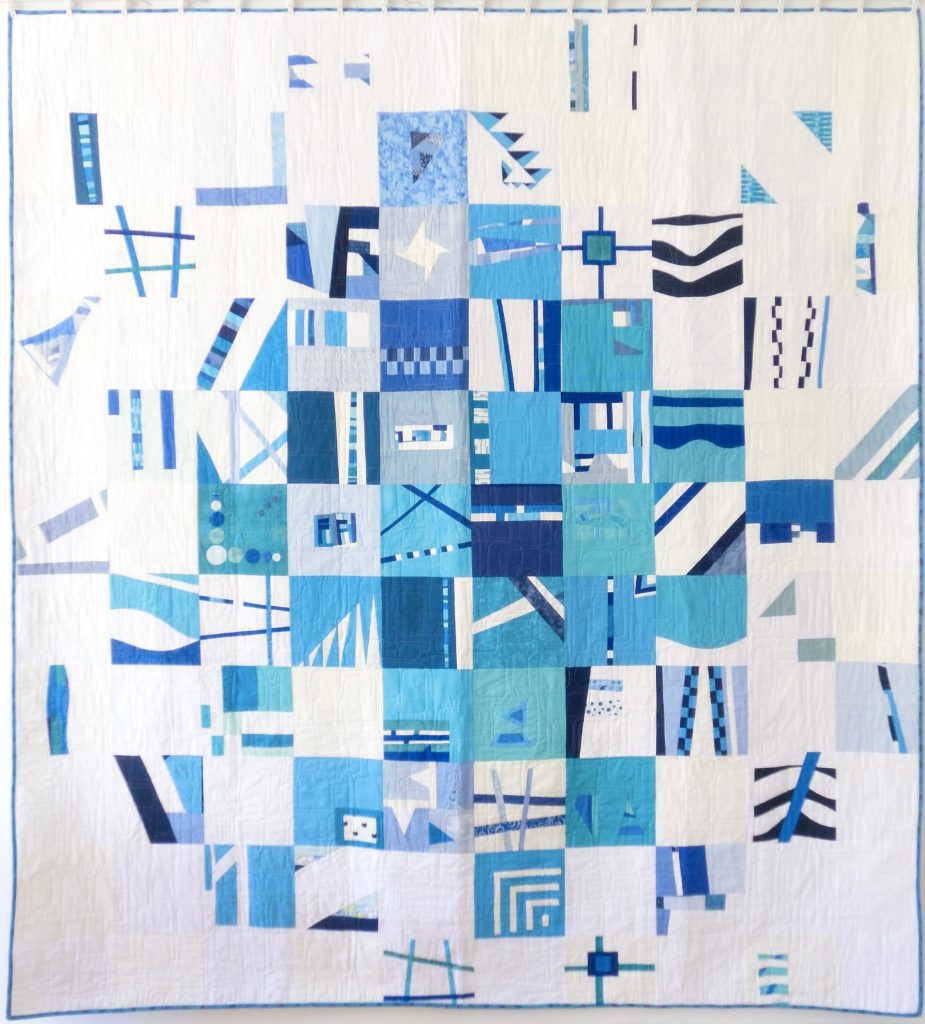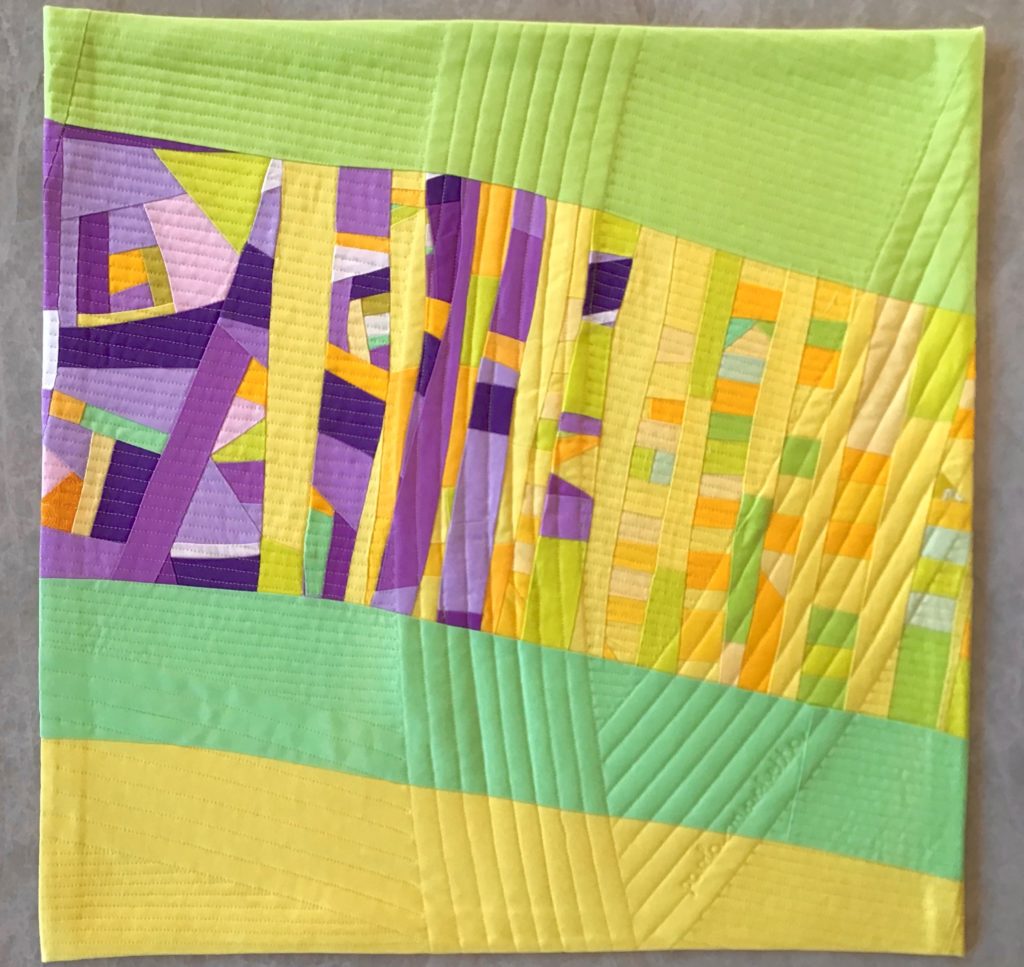
I’ve attended an on-line quilting workshop with Brenda Gael Smith, on the composition of abstract works inspired from images of our real life. It was already since the first paper-cutting exercise, that my mind started to travel along the theme of water courses. River-like mark-making appeared plenty of times on my resulting mini quilt. Thus, I gave it the title “Stream”.
I explored many rivers along the northern part of Italy, and I collected plenty of stories.
This is the story that I feel being connected with my quilt.

Last Sunday I spent all day touring by bike. I took the train, I reached the town of Cormons, and I routed to the town of San Pietro al Natisone, where a chestnuts fair was in planning.
I had lunch at midway, in Cividale.
After some tea and some rest, I was ready to push the pedal again.
In the afternoon I had to study my map.
The street I expected to use was blocked, due to a local motorbike race.
I tried to reach the limit point, hoping for the race to be finished, but they told me: “motorbikes will continue all day long”.
My route was crossing an area impossible to reach… I was tempted to show my anger to the policeman.
But I managed to keep quiet.
It had to be possible to find another way.
So, I started to explore the surroundings.
There was a tiny lane, just behind the house, that seemed to head for a backyard…
A small wooden signal appeared: “To Purgesimo, 1 mile”.
Great: this was my direction.
Dear cars, if the street is forbidden for you to pass, this doesn’t mean that for us, bike runners, there are no alternatives!
The most beautiful part of my tour started there.
A red pathway between the fields. The beauty of the river, along the side. A sunny sky with yummy clouds.
I spotted a layer of acorns under my wheels; some purple flowers of the specie “aster dumosus”; the dotted decoration on the body of a fleeting snake; two white horses running in the wood, and the sound of water stream audible only by me, cycling alone. Plenty of fruit types where shown at the chestnut fair. I headed back home, with four different chestnut packs, ready for a tasting exercise.




































